VVAM Newsletter 80 – 2000
FRIENDS OF THE AIRBORNE MUSEUM
Editors: Drs. R.P.G.A. Voskuil
C. van Roekel
G.H. Maassen jr.
Newsletter No. 80, November 2000
Translated by Cathrien and Peter Clark
Representative in Great Britain: Niall Cherry, 3 Church Road, Warton, Lancs, PR4 1BD Tel. home 0177-2632764

three clergy in attendance. The Reverend R.A.W. Boyce from Britain is flanked by two female Dutch colleagues: Domina M.M. van Zoest and Pastor M.H.A. Wiendels- Neijenhuis.
(photo; Berry de Rens)
Schools Project website
For more than 15 years schoolchildren have been able to make use of a work project during their visit to the Airborne Museum, serving as a supplement to senior primary education classes and a foundation to junior secondary education classes. The aim of this project is to give structure to the impressions gained during their visit.
Hundreds of schools, Dutch and British, and many thousands of pupils have made use of the Schools Project over this period, and next year we could be welcoming our 50,000th participant.
However, changes, be they temporary or permanent, are constantly being made in the make up of the exhibits. In this way the museum collection is regularly enhanced with acquisitions, and large and small theme-exhibitions are organised annually. Because of all this the exhibits and the Schools Project often get out of phase. In such cases changes to the printed project material is extremely labour intensive and, in particular, very costly.
Not only that, from time to time it becomes necessary to make changes in the didactic and organisational areas. To this end group assignments were introduced, whereby small work groups are assigned to study certain aspects of the events of September 1944 in detail, and then to engage in information-exchange forums with other groups. A rich variety of questions and tasks demands extra effort from the participant.
Up to now the printed Schools Project has been sent by post to the schools who have made it known they intend visiting the Airborne Museum. When the stock of printed material ran out it was decided to follow a different route and to utilise the new communication techniques that have arisen over recent years, in this case the Internet.
The latest editions of both the Dutch and English versions of the Schools Project have recently been added in their entirety to the Airborne Museum website. Now, any school with access to the Internet, wherever in the world, can download the Schools Project free of charge. This is a unique way of working in the Netherlands, one in which we are fulfilling a pioneering role, even at European level. The technical side of the project was excellently formulated and realised by the De Kleuver company from VeenendaaL
Friday 15 September 2000 arrived. After Wybo Boersma’s investiture ceremony (see below), the Friends’ Society board handed the Schools Project ‘new style’ over to the Airborne Museum Foundation. You can find it on www.airbornemuseum.com.
Decoration for Wybo Boersma
On Friday 15 September, during a slightly disorganised, improvised but extraordinarily cosy and relaxed get together in Huize Hartenstein, Wybo Boersma, director of the Airborne Museum and advisor to the Friends’ Society, was made Companion in the Order of Oranje Nassau in a ceremony carried out by the burgomaster of Renkum Municipality, Mr J.W.A.M. Verlinden BA. In his speech the burgomaster expressed his appreciation for all the work Wybo does for the museum. He has been a Foundation board member since 1974 and, following the completion of his military career in 1991, he has focused entirely on the organisation and advancement of the museum. Wybo Boersma is responsible for the management of the collection, educational initiatives, public relations, and the annual exhibitions and book fairs. In addition he organises battlefield tours and gives lectures. Since 1986 he has acted as advisor to the Society of Friends.
And on top of all this, he is deeply involved in the Pieter Maritz Scout Group, the Signals Museum of the Royal Netherlands Army in Ede, and as chairman of the Documentation Group ’40-’45.
The Friends’ Society board was of the opinion that his exceptional services and our appreciation of His work were sufficient reasons for proposing him for Royal recognition with, as you see, a wonderful result.
After the burgomaster had presented the decoration to Wybo, Chris van Roekel said a word on behalf of the Society of Friends. To underline his laudatory and appreciative words he clicked on a special page of the Schools Project website that was being demonstrated on a nearby video screen. The page read: ‘Wybo, sincere congratulations on behalf of…. Mrs Nanna Boersma was presented with a beautiful bouquet.
Then, as representative of the Foundation board, Mr Duyts surprised the recently honoured party with the associated medal.
That it was a successful, happy and relaxed evening can be seen from the fact that it was almost midnight before anyone thought about making his/her way home, feeling good.
Sir Wybo, congratulations. You earned it! (Chris van Roekel)

15 September 2000; the Airborne Museum ‘Hartenstein’. Wybo Boersma receives the decoration ‘Companion in the Order of Oranje Nassau’ from Renkum Burgomaster Verlinden.
(photo; Berry de Reus)
Commemorative envelope
The Airborne Museum again published a commemorative envelope during the recent commemoration of the Battle of Arnhem. It is the fifth in the series with ‘Monuments of the Battle of Arnhem’ as subject. The envelope shows the monument to the Royal Army Service Corps Air Despatchers who died during the Battle of Arnhem. The monument was raised in 1994 and is located to the north of the Airborne Cemetery, close to one of the former dropping zones.
The envelope bears a 100-cent Rembrandt postage stamp and this edition consists of 500 numbered copies. They are franked with the philatelists’ stamp by Oosterbeek post office. As in previous years, envelope No. 001 was presented to the ‘Leader of the Pilgrimage’, this year being Brigadier General M.D.K. Dauncey, section commander of G Squadron, The Glider Pilot Regiment, during the Battle of Arnhem.
The envelopes are on sale in the Airborne Museum, price f 7,-.
Melksham glider ”revisited7
We received the following from Peter Clark in Deurne in response to the piece by Niall Cherry in Newsletter No. 79 about the glider that landed near Melksham in Wiltshire, England.
“I grew up in Melksham, a small market town some seven or eight miles from Keevil airfield. I knew nothing of that particular glider until a few years ago, when I read an article in the ‘Melksham News’, a newspaper we receive regularly from friends in England.
The special constable mentioned in Niall’s article was a certain Mr Coleman. After the war he kept a small shop, coincidentally not far from where the ‘Melksham glider’ came down.
I don’t know if the glider was recovered later, but I do remember that, for many years after the war, a farmer used a four or five metre long section of a Horsa fuselage as a chicken coop. It had a doorway but no door, and bench seats down each side. The perspex windows were still intact. This fuselage section was in a part of Melksham known as Lower Forest, close to where I lived and also near the spot where the above-mentioned glider landed on 17 September 1944.”
Appeal
For a number of years I have been engaged in compiling a list of names of all servicemen of the 1st British Airborne Division who took part in the fighting at Arnhem in September 1944. Also included are men of the Glider Pilot Regiment and Polish servicemen. So far I have assembled .11,000 names, including rank, unit, age, KIA/POW etc.. I would like to know if any members would be interested in such a list, which, if there is sufficient interest, could possibly be published. If you are interested in this list of names please notify Philip Reinders, Margrietstraat 4, 6991 XH, Rheden; e-mail address, abrg.reinders@12move.nl.
(Philip Reinders)
Request for information about photograph
We have received a photograph from member Bert Hougardy that he came across on the Internet. The explanation with the picture states that it shows men of the 2nd Parachute Battalion during their advance through the village of Heelsum. No further information on the photo could be obtained because it seems that the website, www.21para.freeserve.co.uk/airborne.htm, is no longer accessible.
Therefore this appeal to our readers. Was this photo (see print) actually taken in Heelsum on 17 September 1944? If so, where exactly was it taken, who was the photographer and who has the original print? Anyone who can provide information is kindly asked to contact Geert Maassen, Renkum Municipal Archivist, General Urquhartlaan 4, 6861 GG, Oosterbeek; tel. 026 3348303.

This picture was discovered thanks to the Internet. Who knows where and when it was (photo; via Bert Hougardy)
CDs about /Arnhem/ and ‘Varsity’
Recently, on the initiative of Lt. Col. D.A. Armitage, Curator of the Museum of Army Flying at Middle Wallop, a huge amount of original archive material from the museum’s collection has been put on CD- ROM. Two of these contain documents about the Battle of Arnhem.
The CD-ROM ‘Operation Market Garden, Arnhem, Volume 1’ comprises just over 550 pages, including Intelligence Reports, Operational Instructions for HQ 9th Troop Carrier Command, 52nd Troop Carrier Wing, Glider Pilots, 4th Parachute Brigade and 1st Airlanding Brigade. In addition, there are Operation Reports and War Diaries of 1st Airborne Division, 1st Airlanding Brigade, 1st Parachute Brigade, 7 KOSB and the Recce Squadron. Also included is an English translation of the entire Krafft report.
CD-ROM Volume II includes reports from the South Staffords, 9th Field Company Royal Engineers, REME, and some accounts from soldiers who managed to escape after the battle. A large part of this CD-ROM is given over to uncaptioned ground and aerial photos.
The CD-ROM about Operation Varsity is based on the book ‘Battlefield Tour Operation Varsity’, published by the British Army on the Rhine in 1947. These Battlefield Tours came into being just after the war and were intended for officers wishing to visit the former battlefields. Only a limited edition was produced and they are therefore very rare. The entire contents of ‘Operation Varsity’, comprising more than 100 pages plus maps and photos, have been put on CD-ROM. This is an indispensable source of information for anyone interested in the Rhine Crossing operations in March 1945.
One small comment: it states on the CD-ROMs that the copyright rests with the Museum of Army Flying. However, some of the original documents and photos come from the Public Records Office and the Imperial War Museum in London.
The three CD-ROMs are from the series ‘Archive Britain Campaign’, produced by Real vision Imaging Solutions Ltd, Suite 407 Victoria House, Somers Road North, Portsmouth, Hampshire, PO1 1PJ, England. Tel (in England) 023 9257 6275. E-mail, request@arclaivebritain.com. Each CD-ROM costs £ 9.95.
(Robert Voskuil)
Identification of a fallen German serviceman
Through his research into German servicemen who were killed in Oosterbeek and surroundings, member Hans Timmerman has succeeded in making an important contribution to the positive identification of a German soldier. Until recently, the man in question was listed as missing, but appeared to be buried in the German Military Cemetery at Ysselsteyn (Limburg) under an incorrect name.
It concerns Bootsmann Alfred Steckhan, who died on September 20 1944 while serving with Marine Auffanglager Zwolle. This Auffanglager was raised shortly after the allied landings in Normandy in June 1944 to gather naval personnel withdrawing from France and Belgium. Following the start of Operation Market Garden, a battle unit was formed in the Auffanglager under the name Marine Schiitzen Bataillon 250. This unit, also known as Kampfgruppe 642, was deployed against the British Airborne troops in Oosterbeek and surrounding area from 19 September 1944 onwards. Alfred Steckhan was probably attached to this unit. After the fighting the battalion returned to Zwolle, possibly to serve as reserve personnel.
Alfred’s field grave was discovered in 1945 alongside Valkenburglaan in Oosterbeek and his remains were transferred to the ‘Ehrenfriedhof Zypendaal’ German military cemetery in Arnhem.
Despite a letter from his wife to Arnhem council in 1947 in the hope of finding her husband’s last resting-place, no one seemed to make the connection at the time between the name of the missing man and an ‘Alfred Sterkhan’, whose name was on the list of disinterred German servicemen in the Renkum municipality.
This ‘Sterkhan’ was transferred to the German Military Cemetery at Ysselsteyn in 1948, where attempts were still being made in the early sixties to establish his true identity. It would appear that even then doubts were being expressed over the validity of the name. Due to the failure of these efforts, he has lain buried there, until recently, under the name Alfred Sterkhan, without further personal details.
Because Hans Timmerman came across the above- mentioned letter in the Arnhem municipal archives in 1999,52 years on it was still possible to associate the relevant information with the incorrect name on the Renkum council list. Close co-operation between the various German authorities led to the positive identification, and they even managed to trace Alfred Steckhan’s daughter.
Alfred’s grave can be found in the cemetery at Ysselsteyn, block BM, row 12, grave number 283. Some time this year the correct details will be engraved on his headstone.
(Hans Timmerman/Geert Maassen)

Bootsmann Alfred Steckhan.
(photo; via Mrs Anneliese Bauer)
Heinz Harmel dies
Notice has reached us of the death in Germany on 2 September 2000 of Heinz Harmel.
During the Battle of Arnhem, Major General Harmel commanded the 10th SS Panzer Division ‘Frundsberg’. In September 1944 tliis division operated mainly near the Rhine Bridge in the capital of Gelderland and in the Betuwe, where it tried to prevent the breakthrough of British XXX Corps. Harmel’s decorations included ‘Trager des Eichenlaubes mit Schwertern zum Ritterkreuz des eisernen Kreuzes’.
With his death the last general from the Battle of Arnhem is gone.
‘For No Apparent Reason’
The book ‘For No Apparent Reason, The Shooting of Captain Brian Brownscombe GM, R.A.M.C.’ would never have been written but for member Bob Gerritsen’s inquisitive nature. After reading Chris van Roekel’s book ‘Verscheurde Horizon’ (Torn Horizon) and ‘Red Berets and Red Crosses’ by Niall Cherry, Bob was left struggling with the question of the circumstances surrounding Captain Brownscombe’s death. Accurate research has produced a book about a minor fact in the wider context of the Battle of Arnhem, but indeed a fact which has to do with one of the few war crimes perpetrated during the battle. I have read Bob’s book with interest and admiration.
The book describes Brownscombe’s life in concise chapters. His medical studies and entry into service with the Royal Army Medical Corps lead to us meeting him again, first with the 2nd Battalion The South Staffordshire Regiment in Sicily and later as Regimental Medical Officer at Arnhem. He was captured and set to work in Arnhem Municipal Hospital, treating both German and British casualties.
Brownscombe was talking to a Danish Waffen SS soldier at the hospital entrance when he was shot dead by a German SS sergeant. Both SS men belonged to the SS-Kriegsberichter-Abteilung 5, the unit possibly responsible for the propaganda broadcasts near the Hartenstein using a loudspeaker truck.
The book looks at the lives of the Dane Helwig- Larsen and the murderer Lerche, and closes – via a number of eyewitness accounts from other British officers – with Lerche’s trial. His reasons for murdering Brownscombe were never made entirely clear at the trial. Was Lerche simply drunk, was he working to orders, or did he think Brownscombe was attempting to escape?
Despite a few unfortunate irregularities in the text it is an extremely readable book and one which can be recommended. It comprises 32 pages and is published by member Robert Sigmond at f 15,-. It can be purchased at the Airborne Museum ‘Hartenstein’.
(Okko Luursema)

Society member Bob Gerritsen, author of the booklet ‘For No Apparent Reason’, at the grave of Doctor Brownscombe in the Airborne Cemetery, Oosterbeek. (photo; Robert Sigmond)
‘Tugs and Gliders to Arnhem’
This book, written by member Arie-Jan van Hees and published by himself, has the sub-title ‘A detailed survey of the British glider towing operations during operation Market Garden 17,18 and 19 September 1944.’ This indicates immediately what this book is: a reference work for anyone interested in the role played by gliders in the landings around Arnhem, and the British part in the landings at Groesbeek. Nos. 38 and 46 Groups RAF provided the towing aircraft for the gliders.
The flights are described per day, split up per Group and per airfield. The book also provides extensive information on the gliders that never reached Arnhem but were forced to make emergency landings, or crashed, on the way. No dry summation, but details supplemented with eyewitness accounts. Where possible the names of the pilots have been given. In the final chapter (19), the various loads are described, illustrated with photos, which gives one an idea of how the diverse items were transported. An overview of the equipment that eventually arrived in Arnhem is also included.
Although the book does not set out to describe the eventual fate of the crews or loads, this has in fact been done in the case of the lesser-known units, such as the US Air Support Signal Teams and the RAF Light Warning Units. Those who are more conversant with the subject will recognise some of the stories because they have already been published in part, or have been taken from known documents. However, taking the book as a whole this is no drawback. The amount of information is so enormous that it is impossible to check that all details are correct. In a work of this scope it is inevitable that some tilings slip through the net. For example, on page 212 the rank of Dutch commando Sergeant Luitwieler is given as Lieutenant.
The book is well illustrated with many, some hitherto unknown, photographs. The source indication with the photos is alas somewhat haphazard. This means that some photos, unmistakably originating from the Imperial War Museum collection, or are at least Crown Copyright, are given as coming from other archives or from private sources. Regarding the IWM, it would have been more correct if the archive number had also been indicated.
The book lacks an index, a serious omission in a publication purporting to be a work of reference. However, this is to be published separately.
The fact that the book is written in English will present no difficulties to most Dutch people. All in all, it is a must for anyone interested in the Battle of Arnhem, a book of which the author can be proud and which, for the buyer, is a fine addition to his/her Arnhem library.
‘Tugs and Gliders to Arnhem. A detailed survey of the British glider towing operations during operation Market Garden 17,18 and 19 September 1944’ by Arie-Jan van Hees comprises 288 pages and includes many photographs and maps. It costs f 69,75 and has no ISBN number.
(Wybo Boersma)
‘From Pacifist to Glider Pilot’
This intriguingly titled book by Alec Waldron recently appeared on the market. In it the author, born in 1920, describes the first 26 years of his life with emphasis on the period 1937 to 1946.
Alec Waldron grew up in a deeply religious community with harsh rules, one of these being a ban on joining the armed forces. After a difficult process he finally broke free from this dogmatic religious environment by joining the Royal Corps of Signals in November 1940. In January 1942 he transferred to the Glider Pilot Regiment. After successfully completing his training on Horsa gliders he was attached to the Intelligence Section of the HQ of No. 1 Batallion, The Glider Pilot Regiment. He took part in the Sicily landings in July 1943, where his glider landed in the sea. He returned to England in January 1944, whereupon No. 1 Batallion GPR was re-formed into No. 2 Wing GPR.
On 17 September 1944 Waldron landed with his glider on agricultural land near Wolfheze, and next day he was involved in the fighting in Oosterbeek. He operated out of No. 2 Wing HQ, situated in a house in Hartensteinlaan. At the end of the battle he succeeded in escaping across the Rhine along with the remnants of the division. After the Battle of Arnhem he remained in the Glider Pilot Regiment until his demobilisation in 1946. In fact, the chapters on Sicily and Arnhem form just a modest part of the book. Much more attention is paid to the training, flying training and life in the Glider Pilot Regiment. Everything is written in a pacey and humorous style.
Not many glider pilots’ personal accounts have ever been produced, and that is why this book comes as a welcome addition to the list of publications about British Airborne forces during World War II.
The book has 194 pages and is illustrated with dozens of photos, including three large folds-outs at the back. One of these is a beautiful mosaic of American aerial photographs taken on 18 September 1944, showing the hundreds of gliders on landing zones ‘S’ and ‘Z’.
‘From Pacifist to Glider Pilot’ by Alec Waldron (ISBN 1-873203-53-5) is published by Woodfield Publishing, Bognor Regis, West Sussex, England and costs £ 9.95. (Robert Voskuil)
‘Arnhem – The Fight to Sustain’
Descriptions of the Battle of Arnhem focus mainly on the combat units. As with all armed forces, the Airborne division contained units whose job it was to enable these combat units to do battle. The stories of many of these emits at Arnhem have already been told. For example, the story of the signals in ‘Echoes from Arnhem’ by Lewis Golden, the medical troops in ‘Red Berets and Red Crosses’ by Niall Cherry, the technicians in ‘With Spanners Descending’ by Joe Roberts, and the military police in ‘The Pegasus Patrol’ by J. Turnbull and J. Hamblet. Up until now not much has been known about other, especially smaller, units.
In the book ‘Arnhem – The Fight to Sustain’ by Brigadier Frank Steer and published in September, the history of the supporting units, since amalgamated under the Royal Logistics Corps, has been extensively described. The units involved are the former Royal Army Service Corps, the Royal Army Ordnance Corps, the Army Catering Corps, the Pioneer Corps and the Royal Postal Section. Reports by these units after the battle are few and far between, therefore the available information is incomplete. It is not even known precisely which soldiers were at Arnhem.
With this limited information from England and the Netherlands plus interviews with veterans as sources, Frank Steer has finally written a good, cohesive book; no easy job. Firstly, the make up and task of these units within the Airborne division’s organisation is gone into in a very systematic way. Then come the planning, the journey, the landing and the progress of the fighting per unit. The last mentioned is put within the framework of the overall course of the battle. Because the operation failed to go as planned, the actual tasks of the logistics units were not entirely fulfilled. Some soldiers from these units were sometimes given totally different assignments. In the end, most were deployed as infantry, an eventuality that was also catered for in their training. Frank Steer shows that the concept of the logistical organisation for an Airborne division was indeed sound, and as such is still being used.
The part of tlie division’s ‘Seaborne Tail’ that never reached Arnhem does not go unmentioned in the book. He also covers the Airborne Forward Delivery Airfield Group (AFDAG), which landed near Grave on 26 September.
The whole is interspersed with short eyewitness accounts, to the benefit of readability. A dry compilation of units and facts is thus avoided. The author indicates the various places where complete information proved impossible to obtain. Footnotes at the end of each chapter show the sources or indicate if the information given is dubious.
There are few known photographs of the support units during the battle. However, the author has solved tlris by including many previously unpublished pictures of the preparations in England and many portrait photos of servicemen. It is a shame though that the layout designer has placed the majority of the illustrations at the edge of the pages. Those nearest the spine of the book require the reader to force the book really wide open.
Unfortunately, it would again seem that the correct recording of Dutch names is occasionally difficult. What, for instance, are we to make of a re-supply drop at Van Lehnehopweg? And in the description of the Air Despatch monument, incidentally in Oosterbeek, not Arnhem as written, 47 Air Despatch Squadron The Royal Logistic Corps, who allegedly erected the made-in-England monument in Oosterbeek, are named, while the members of the Society of Friends of the Airborne Museum who did the bulk of the work voluntarily get no mention.
But these are minor imperfections, and I read the book from cover to cover in one sitting. Essential reading for serious students of the Battle of Arnhem. Despite the hefty price, £ 25, it is certain to find its way to members of the SFAM. An idea for Christmas perhaps? The author has also decided that all profits from the book will go to the RLC Benevolent Fund and to the Airborne Museum.
‘Arnhem – The Fight To Sustain, The Untold Story of the Airborne Logisticians’ by Frank Steer is published by Leo Cooper, Pen & Sword Books Ltd, Barnsley, South Yorkshire S70 2AS, Great Britain.
The book was published in September 2000, the ISBN number is 0 85052 770 8, it contains 176 pages, is illustrated and is in the English language.
In the Netherlands it can be purchased at the Airborne Museum ‘Hartenstein’. It is available in England from, the Corps Adjutant RLC, RHQ The RLC, Dettingen House, Deepcut, Camberley, Surrey, tel. 01252-340864. It can also be ordered on the Internet through Amazon, perhaps an easier option for those not living in Britain or the Netherlands. (Wybo Boersma)
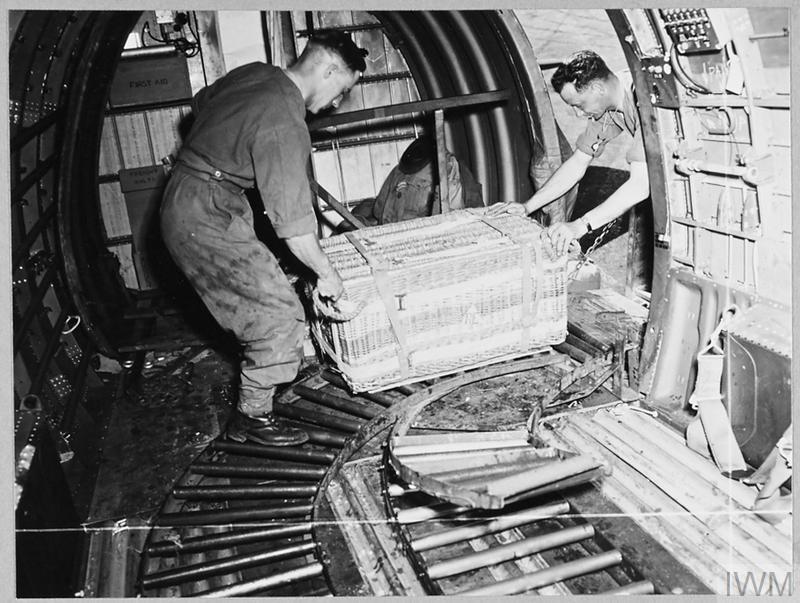
SUPPLIES DROPPED BY TRANSPORT PLANES (CH 12945) Original wartime caption: Panniers containing supplies are dropped by parachute from transport planes whenever the need arises. These large wicker baskets are packed with food, arms, ammunition wireless sets and spares of all kinds. They are padded with sandbags, containing straw to safeguard their contents. Weight of the pannier with parachute attached is 350 pounds. Picture (issued 1944) Shows -… Copyright: © IWM. Original Source: http://www.iwm.org.uk/collections/item/object/205452456
Men of the Royal Army Service Corps load a supply pannier into a Dakota. A roller track is visible in the floor in the foreground over which the panniers could be slid. This simplified and speeded up the loading and ejection of supplies by the Air Despatchers. The photograph conies from Frank Steer’s book ‘Arnhem, The Fight to Sustain’.
English edition of ‘Over & Over’
An English version of the booklet ‘Over & Over – Ooggetuigeverslagen van de slag om Arnhem’ (English title, ‘Over & Over – Eyewitness Accounts of the Battle of Arnhem’), has now been published. As reported in Newsletter No. 77 the booklet was compiled by Peter-Alexander van Teeseling from Oosterbeek. It comprises 96 pages and is illustrated with 120 photographs. Kitty Brongers did the translation.
At the same time, a revised edition of the Dutch version has been issued.
‘Over & Over’ is published by ‘Kontrast’ in Oosterbeek and costs f 25,-.
‘Blik Omhoog 1940-1945’ completed
We made brief mention of the fourth and last book in this series, sub-titled ‘Wolfheze en de Zuid-Veluwe in oorlogstijd’ (Wolfheze and the South Veluwe in wartime) in the October 1999 issue of the Newsletter, but because it represents the rounding off of a memorable series we return to it in more detail.
The index in tills Volume S, containing some 3,100 names of people and 900 place names, illustrates the character of ‘Blik Omhoog’: naming names in detailed descriptions of wartime episodes. It is the region between Arnhem and Wageningen/Ede that
is so extensively covered, viewed from the central point of the area, Wolfheze, the author’s birthplace. Besides registers, this volume provides additions to and information on previously published volumes. Although it comprises ‘just’ 144 pages, it contains many interesting subjects. The backgrounds of the 48 people freed from Arnhem gaol (following a raid by the KP on 11 June 1944) is researched step by step and described in 25 pages. Fifteen pages deal with the air war, V weapons, and war victims in the region.
Besides additional information (40 pages) on all other volumes of the book, there are chapters with new facts on: the razzia at Buunderkamp, a follow up to the chapter ‘Joodse Lotgevallen’ (The Fate of the Jews), ‘Mata Hari’ Bintje Vos who stayed in the area, the history of’t Wijde Veld at Ginkel, and the Dutch SS during the Battle of Arnhem. The book is available from bookshops in the Zuidveluwezoom area and the Airborne Museum, price f 25,-.
Our member and author Cor Janse worked for more than ten years gathering historic material on the course of the wartime period 1940-1945 in the Renkum municipality, namely in Wolfheze and surroundings. He sought, and found, hundreds of (former) inhabitants and other involved parties whom he interviewed or with whom he corresponded, and he consulted archives, libraries and documentation collections both here and abroad. In this way the author built up such a treasure of data that it was considered necessary to issue the publication in four volumes. It eventually amounted to 1388 illustrated pages in a sound work of 19,5 x 26,5 cm format.
Volume 1 of the book was presented five years ago and dealt with the period from 1939 up to 17 September 1944. The publisher no longer has any copies in stock and it is only available here and there. The second member of the family, about the Battle of Arnhem, saw the light of day in 1997. Book III appeared last year and deals exclusively, in text and pictures, with the period after the Battle of Arnhem. In this volume, in depth treatment is given to subjects such as the evacuation of the population, the Rotterdam entrenchment workers, the liberation, the return, retribution and rebuilding. Both these editions are still for sale in the bookshops.
Stop press! We are pleased to tell you that it has been decided to re-print Book I. Fortunately there is still enough demand, and through this new edition the complete series will again be available for the time being. It is expected that, as you read this, Volume I will be back on sale in the regional bookshops and at the Airborne Museum ‘Hartenstein’.
Further information on the series ‘Blik Omhoog’ can be obtained from the author and publisher Cor Janse from Rheden (026 4951033).
(Geert Maassen)
‘Everywhere where fate and fame take us’
‘Quo fast et gloria ducunt’ is the motto on the badge of the Royal Artillery that for the last year has appeared on the Newsletter envelopes. The envelope in which this Newsletter reaches you will be the last bearing this particular emblem. Next year it will be the turn of the Royal Engineers, who will be celebrating their 150th anniversary.
From now on, and at the request of members who collect the envelopes and are gradually building up a nice collection of regimental emblems, we shall be including information on the units concerned.
The ‘Royal Regiment of Artillery’, to give its official title, is one of the oldest British regiments. Although not then ‘Royal’, in the reign of Henry VIII (1509- 1547) there was already talk of a 13-man artillery detachment stationed at the Tower of London. During the internal struggles for the British Crown between the houses of Stuart and Hannover, it was deemed necessary to expand the strength of this small unit to two companies, and the name ‘Royal Artillery’ dates from 1722.
When the struggle for power in Europe erupted into a number of wars, of which the nine-years war (1739- 1748) and the seven-years war (1756-1763) are the most well-known, and the overseas territories (the future Commonwealth) were fought over with the French and Spaniards, artillery units played a major role.
During the siege of San Sebastian in 1813 in the war with France, for the first time there was suggestion of tactical artillery support for infantry units. These tactics were further developed in the Crimean War, where the efforts of the Royal Artillery were rewarded with no less than nine Victoria Crosses. The importance of artillery units increased still more during the Boer War in South Africa. But it was particularly in World War I that both firepower and mobility made tremendous advances, and co-operation between artillery and infantry scaled new heights.
In World War II draught horses were replaced with motorised vehicles, and firepower and accuracy increased, the latter being partly due to the use of radar and aerial artillery observation. At one point it could be said that 40% of the British army consisted of gunners.
There was not an area of conflict in which the Royal Artillery was not deployed, and the inscription ‘Ubique’ (‘everywhere’, ‘wherever’) embellishes the badge with justification.
Her Majesty Queen Elizabeth II is the regiment’s Colonel in Chief.
(Chris van Roekel)
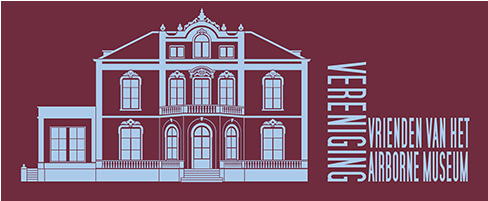
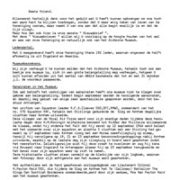
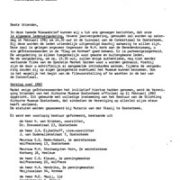
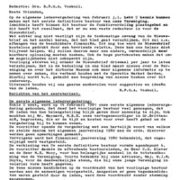
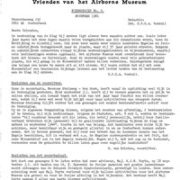
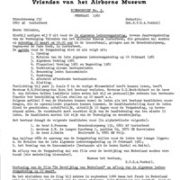
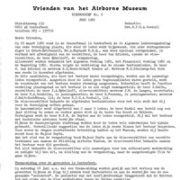
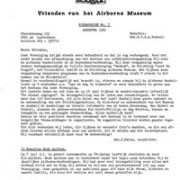
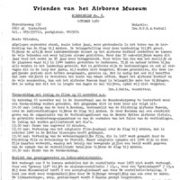
Plaats een Reactie
Vraag of reactie?Laat hier uw reactie achter.